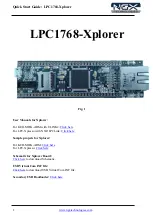
PEB-7605 Series User’s Manual
21
Thermal Management
This BIOS feature controls the activation of the Thermal Monitor
'
s automatic mode. It allows you to determine when the
Pentium 4
'
s Thermal Monitor should be activated in automatic mode after the system boots. In general, the Thermal Monitor
should not be activated immediately on booting since the processor will be under a heavy load during the booting process,
which results in the sharp rise in die temperature from its cold state, which leads to the unstable system. Therefore, to ensure
optimal booting performance, the activation of the Thermal Monitor must be delayed for a set period of time. But how do you
possibly know the optimal delay time? It is recommended that you set this to its lowest value that exceeds the time it takes to
fully boot up your computer.
This item will monitor the CPU thermal to prevent the CPU damage from high temperature.
TM2 BUS Ratio
Select the Represents the frequency (bus ratio of the throttled performance statethat will be initiated when the on-die sensor
goes from not hot to hot
TM2 BUS VID
Select Represents the voltage of the throttled performance statethat will be initiated when the on die sensor gose from not hot to
hot .
Execute Disable Bit
Select when disable , forces the XD feature flag to always return 0.
CPU L1 & L2 & L3 Cache
Cache memory is much faster than conventional DRAM system memory. These fields allow you to
enable
or
disable
the CPUs
Level 1 built-in cache and Level 2 external cache. Both settings are left as Enabled to significantly enhance the performance of
your computer.
Quick Power On Self Test
Enable
this function to reduce the amount of time required to run the POST (Power On Self Test). BIOS will save time by
skipping certain tests during POST. It is recommended that you
disable
this setting. Finding a problem during boot up is better
than loosing data during your work.
First/Second/Third/Other Boot Device
Allow you to select the First, Second and Third Boot Device. If your computer is newly constructed, the next thing you want to
do is load the Operating System from scratch, directly off its CD. Before that, you need to set the First Boot Device to the
CDROM. This instructs the BIOS to boot from the CD drive before trying to boot from the hard drive, which is still blank.
Boot Up Floppy Seek
This function defines the seek disk drivers during boot up .Disabling seed boot up.
Boot Up NumLock Status
This function defines the keyboard's numberpad as number keys or arrow keys. If it is set at
On
the number keys will be
activated, if it is set at
Off
the arrow keys will be activated.
Gate A20 Option
Select if chipset or keyboard control should control Gate A20.
Typematic Rate Setting
When
enabled
, you can set the following two-typematic control items. When
disabled
, the keyboard controller determines
keystrokes arbitrarily in your system.
Typematic Rate (Chars/Sec)
The typematic rate sets the rate at which characters on the screen repeat when a key is pressed and held down.
Typematic Delay (Msec)
The typematic delay sets how long after you press a key that a character begins repeating.
APIC Mode
By enabling this option, “
MPS version control for OS
” can be configured.
Disabled
is recommended.
















































